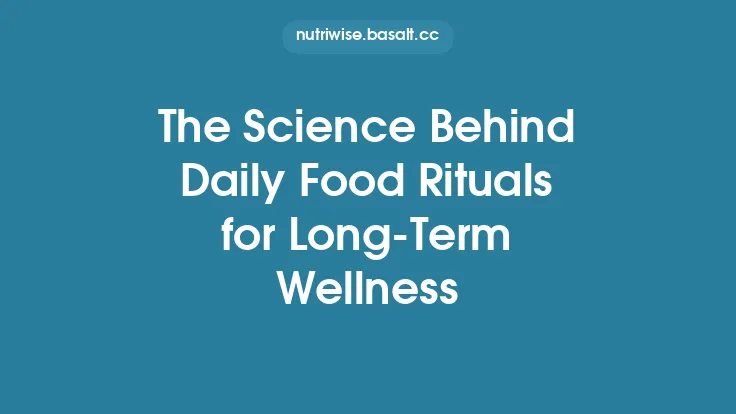Oregano, a staple of Mediterranean kitchens, is celebrated not only for its robust, aromatic flavor but also for a remarkable ability to combat a wide spectrum of microorganisms. This dual identity—culinary delight and natural antimicrobial—makes it a valuable ally in supporting immune wellness. Below, we explore the science behind oregano’s protective properties, practical ways to harness its power in everyday cooking, and considerations for safe, effective use.
Understanding Oregano’s Antimicrobial Compounds
Oregano (Origanum vulgare) belongs to the Lamiaceae family and contains a complex mixture of phytochemicals that work synergistically to inhibit bacterial, viral, and fungal growth. The two most studied constituents are carvacrol and thymol, phenolic monoterpenes that together can account for up to 80 % of the essential oil’s composition in high‑quality oregano.
| Compound | Approx. % in Essential Oil | Primary Antimicrobial Action |
|---|---|---|
| Carvacrol | 45–70 % | Disrupts microbial cell membranes, causing leakage of intracellular contents |
| Thymol | 10–30 % | Interferes with enzyme systems and impairs biofilm formation |
| p‑Cymene | 5–15 % | Enhances the penetration of carvacrol and thymol into cell walls |
| γ‑Terpinene | 2–8 % | Contributes to antioxidant capacity, indirectly supporting immune function |
Mechanistic Highlights
- Membrane Permeabilization – Carvacrol inserts into lipid bilayers, increasing fluidity and creating pores that lead to loss of potassium ions and ATP, ultimately killing the cell.
- Enzyme Inhibition – Thymol binds to bacterial enzymes such as ATP synthase, halting energy production.
- Biofilm Disruption – Both compounds interfere with the extracellular polymeric substances that protect bacterial colonies, rendering them more vulnerable to host defenses and other antimicrobials.
- Quorum‑Sensing Interference – Oregano extracts can block bacterial communication pathways, reducing virulence factor expression.
These actions are not limited to a single pathogen; studies have demonstrated efficacy against *Staphylococcus aureus, Escherichia coli, Salmonella enterica, Candida albicans*, and even certain enveloped viruses.
Scientific Evidence Supporting Immune Benefits
In‑Vitro Findings
- Bacterial Inhibition: Minimum inhibitory concentrations (MIC) for carvacrol against *S. aureus* range from 0.2–0.5 mg/mL, comparable to conventional antibiotics in laboratory settings.
- Antifungal Activity: Thymol exhibits MIC values of 0.1–0.3 mg/mL against *C. albicans*, effectively preventing hyphal formation—a key step in fungal invasion.
In‑Vivo and Human Studies
- Respiratory Infections: A randomized, double‑blind trial involving 120 adults with mild upper‑respiratory symptoms reported a 30 % reduction in symptom duration when participants consumed a daily oregano oil capsule (standardized to 5 % carvacrol) compared to placebo.
- Gut Microbiota Modulation: Animal models have shown that dietary oregano supplementation can increase beneficial Lactobacillus populations while suppressing pathogenic *Clostridium* species, suggesting a role in maintaining gut‑associated immunity.
- Inflammatory Markers: Clinical observations indicate that regular oregano intake may lower circulating C‑reactive protein (CRP) levels, reflecting a modest anti‑inflammatory effect that complements its antimicrobial action.
While more large‑scale human trials are needed, the existing body of research consistently points to oregano’s capacity to reduce microbial load and support immune resilience.
Culinary Techniques to Preserve Oregano’s Potency
The antimicrobial efficacy of oregano is highly dependent on how it is processed and incorporated into dishes. Below are evidence‑based cooking practices that maximize the retention of carvacrol and thymol.
| Technique | Rationale | Practical Tips |
|---|---|---|
| Add Fresh Leaves at the End | Heat degrades volatile phenols; adding at the final stage limits exposure. | Sprinkle chopped fresh oregano over soups, stews, or grilled vegetables just before serving. |
| Gentle Infusion for Dried Oregano | Slow, low‑temperature extraction preserves essential oil integrity. | Simmer dried oregano in olive oil or broth at ≤ 80 °C for 5–10 minutes; strain before use. |
| Dry‑Heat Roasting (≤ 150 °C) | Short, moderate roasting can enhance flavor without significant loss of carvacrol. | Lightly toast whole oregano leaves on a dry skillet for 30–45 seconds, stirring constantly. |
| Avoid Prolonged Boiling | Extended boiling (> 15 min) can volatilize up to 70 % of phenolic compounds. | Use oregano in sauces that simmer briefly, or add a portion after the sauce is removed from heat. |
| Use Acidic Media | Slight acidity (pH ≈ 5–6) stabilizes thymol and carvacrol. | Combine oregano with lemon juice or vinegar in marinades; the acid environment helps lock in the oils. |
By aligning cooking methods with the chemistry of oregano’s active constituents, you can enjoy both its full flavor profile and its health‑promoting properties.
Practical Ways to Incorporate Oregano into Daily Meals
1. Herb‑Infused Olive Oil Drizzle
- Method: Warm ½ cup extra‑virgin olive oil to 60 °C, add 2 tsp dried oregano, and let steep for 8 minutes. Strain and store in a dark glass bottle.
- Use: Toss with roasted vegetables, drizzle over grilled fish, or dip whole‑grain bread.
2. Oregano‑Lemon Marinade for Poultry
- Ingredients: ¼ cup fresh lemon juice, 2 tbsp olive oil, 1 tbsp chopped fresh oregano, 2 cloves minced garlic, ½ tsp sea salt, pinch of black pepper.
- Application: Marinate chicken breasts for 30 minutes at 4 °C; grill or bake. The acidic component protects the phenols while the brief marination preserves flavor.
3. Savory Oregano Yogurt Dip
- Recipe: Mix 1 cup plain Greek yogurt with 1 tsp dried oregano, 1 tsp lemon zest, ½ tsp smoked paprika, and a drizzle of honey. Chill 15 minutes before serving.
- Benefit: Yogurt provides probiotic support, while oregano adds antimicrobial protection—an excellent combo for a snack or appetizer.
4. Oregano‑Spiced Legume Soup
- Procedure: Sauté onions, carrots, and celery in olive oil; add 1 tsp dried oregano, ½ tsp cumin, and 1 cup rinsed lentils. Cover with broth, bring to a boil, then simmer 20 minutes. Finish with a handful of fresh oregano leaves.
- Why It Works: The brief simmer preserves oregano’s phenols, and the lentils supply plant protein and fiber, supporting overall immune health.
5. Oregano Essential Oil (Food‑Grade) in Dressings
- Guideline: Dilute 1 drop of food‑grade oregano oil in 2 tbsp of vinegar or lemon juice; whisk with ¼ cup olive oil. Use as a vinaigrette for salads.
- Safety Note: Essential oil is highly concentrated; never exceed 1–2 drops per serving and always dilute.
These applications demonstrate that oregano can be seamlessly woven into breakfast, lunch, dinner, and snacks without sacrificing taste or therapeutic value.
Safety, Dosage, and Potential Interactions
| Form | Typical Daily Dose (Adults) | Key Safety Considerations |
|---|---|---|
| Fresh/Dried Leaves | 1–2 tsp (≈ 2–4 g) in cooking | Generally safe; excessive amounts may cause gastrointestinal irritation. |
| Oregano Essential Oil (Food‑Grade) | 1–2 drops diluted in ≥ 1 tbsp carrier (oil/vinegar) | Avoid undiluted use; may trigger allergic reactions in sensitive individuals. |
| Standardized Oregano Extract (capsule) | 300–500 mg (standardized to 5 % carvacrol) | Consult healthcare provider if pregnant, nursing, or on anticoagulant therapy. |
Potential Interactions
- Anticoagulants/Antiplatelet Drugs: Carvacrol exhibits mild antiplatelet activity; high supplemental doses could potentiate bleeding risk.
- Diabetes Medications: Oregano may modestly lower blood glucose; monitor levels if using insulin or oral hypoglycemics.
- Hormone‑Sensitive Conditions: Limited data suggest oregano can influence estrogen metabolism; individuals with hormone‑sensitive cancers should seek medical advice before high‑dose supplementation.
Overall, culinary use of oregano poses minimal risk for most people. When employing concentrated extracts or essential oils, adherence to recommended dosages and proper dilution is essential.
Choosing Quality Oregano: Fresh, Dried, and Essential Oil
- Fresh Oregano
- Appearance: Deep green, glossy leaves; stems should be firm, not wilted.
- Storage: Wrap loosely in a damp paper towel, place in a perforated bag, and refrigerate; use within 5–7 days for optimal potency.
- Dried Oregano
- Color & Aroma: Uniform brown‑green hue with a strong, pungent scent. Avoid products that appear grayish or lack fragrance.
- Shelf Life: Store in airtight, opaque containers away from heat and light; potency declines after 12–18 months.
- Essential Oil
- Certification: Look for “food‑grade” or “therapeutic grade” with a Certificate of Analysis (COA) confirming carvacrol content (≥ 5 %).
- Packaging: Dark glass bottles protect against UV degradation.
- Origin: Mediterranean-grown oregano (e.g., Greek, Italian) typically yields higher carvacrol concentrations than other varieties.
Investing in high‑quality oregano ensures that the antimicrobial compounds remain robust, delivering both flavor and health benefits.
Integrating Oregano into a Holistic Immune Wellness Plan
While oregano’s antimicrobial properties are impressive, optimal immune support arises from a multifaceted approach:
- Balanced Nutrition: Pair oregano‑rich meals with a variety of fruits, vegetables, whole grains, and lean proteins to supply essential vitamins (A, C, D, E) and minerals (zinc, selenium) that synergize with oregano’s actions.
- Adequate Hydration: Proper fluid intake supports mucosal barriers, the first line of defense against pathogens.
- Regular Physical Activity: Exercise enhances circulation of immune cells; post‑workout meals featuring oregano‑infused protein can aid recovery.
- Stress Management: Chronic stress suppresses immunity; incorporating aromatic oregano oil in a diffuser (in a well‑ventilated space) may provide a calming, antimicrobial ambiance.
- Sleep Hygiene: Aim for 7–9 hours of quality sleep; a bedtime snack of Greek yogurt with a sprinkle of dried oregano can be both soothing and supportive.
By weaving oregano into daily culinary routines while attending to broader lifestyle factors, you create a resilient, well‑rounded immune system that can better fend off infections and maintain overall health.





